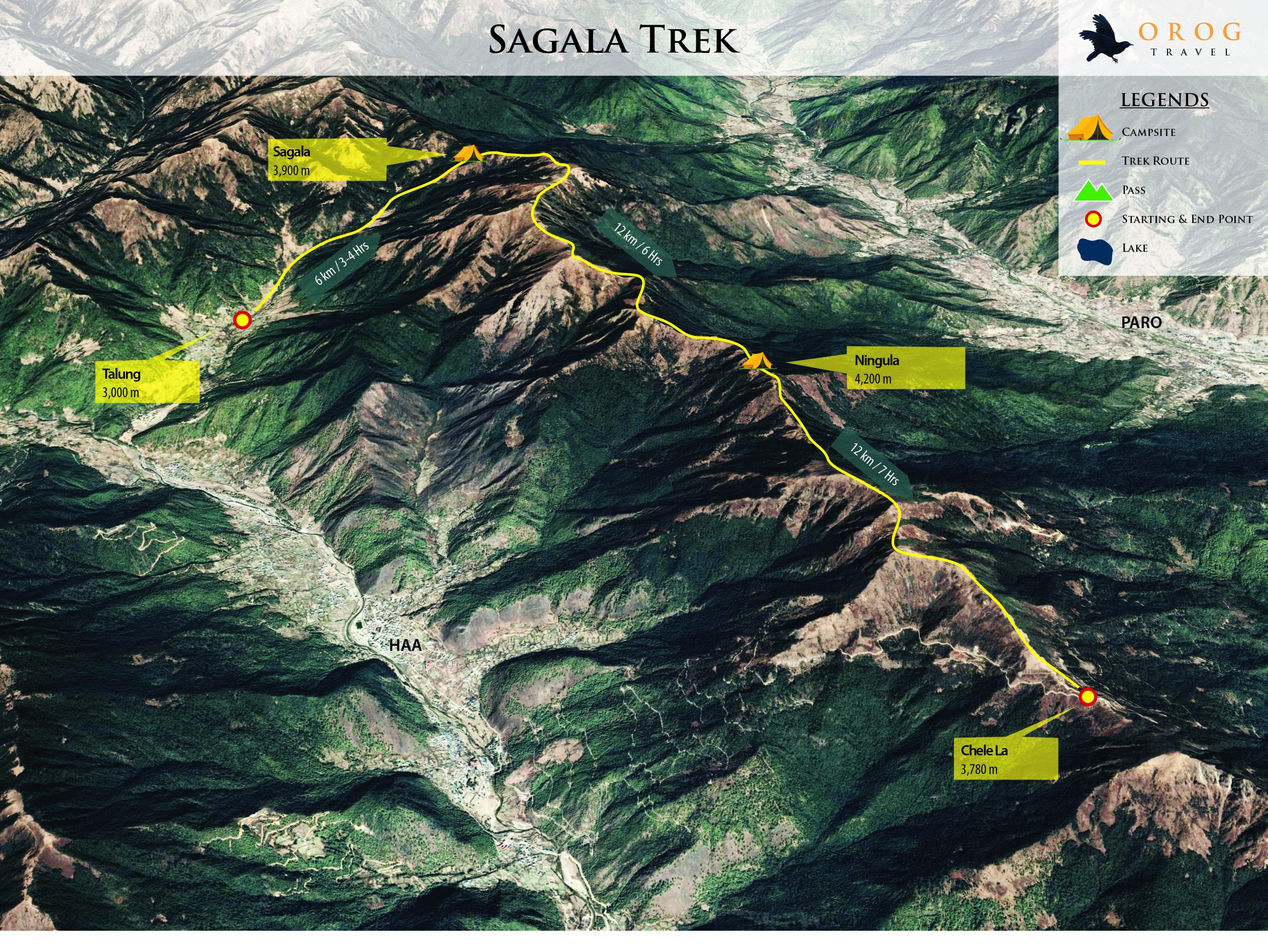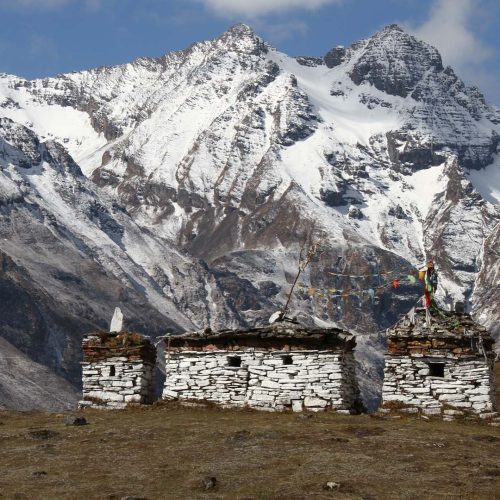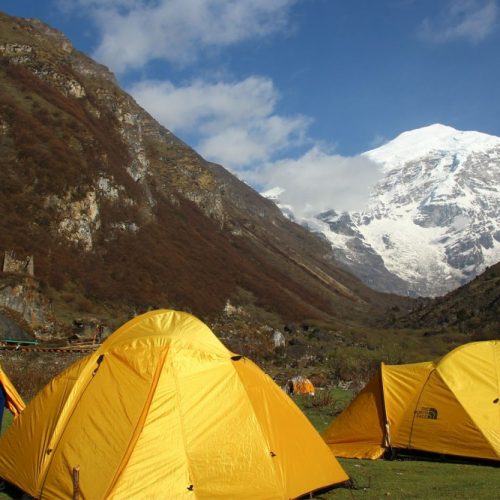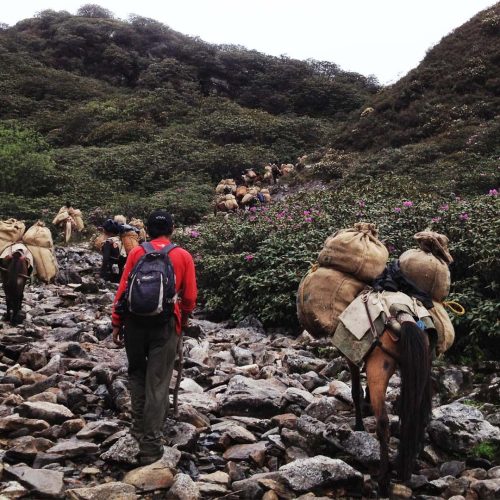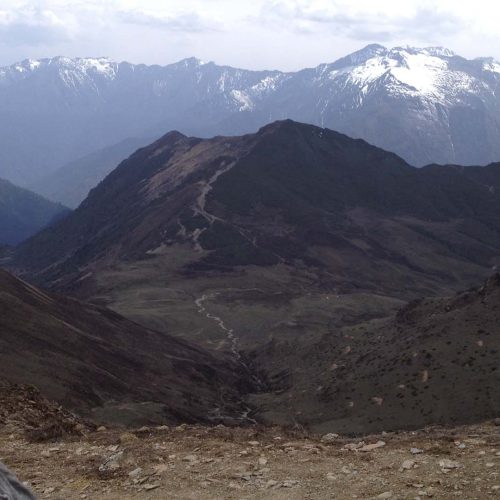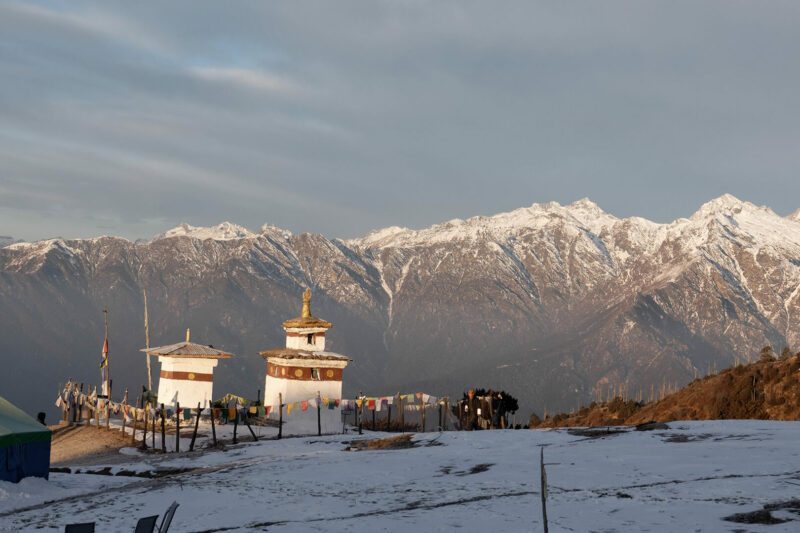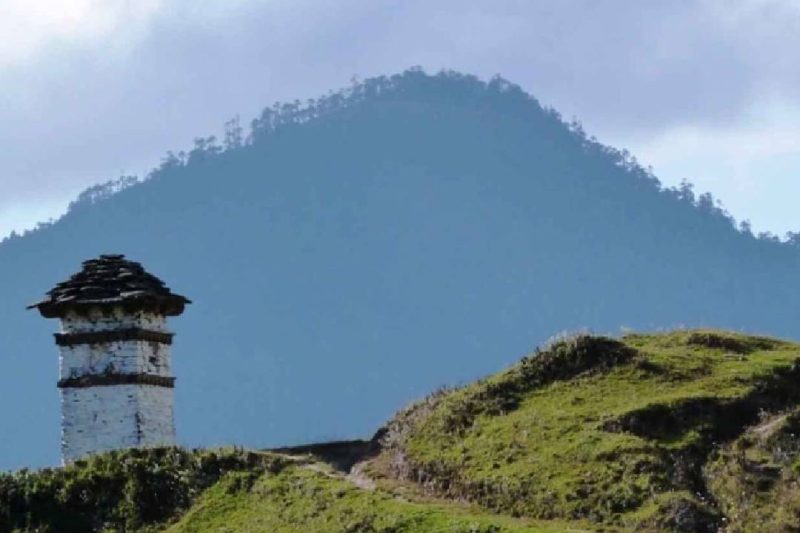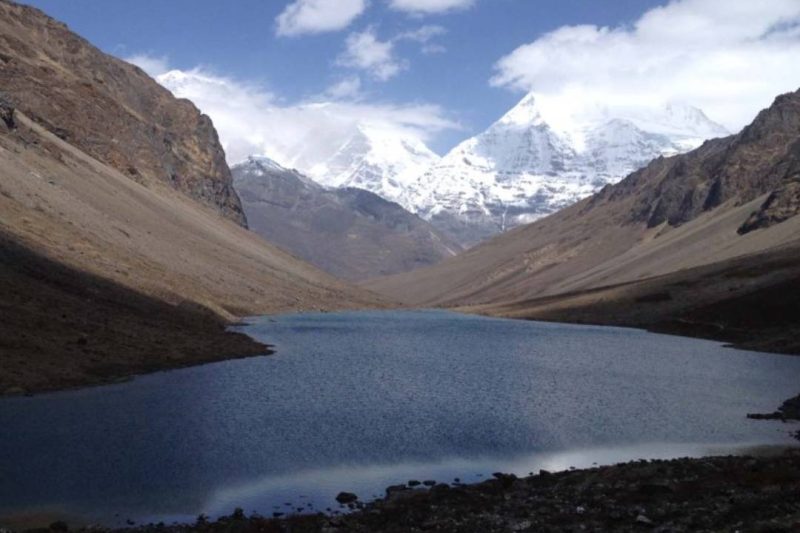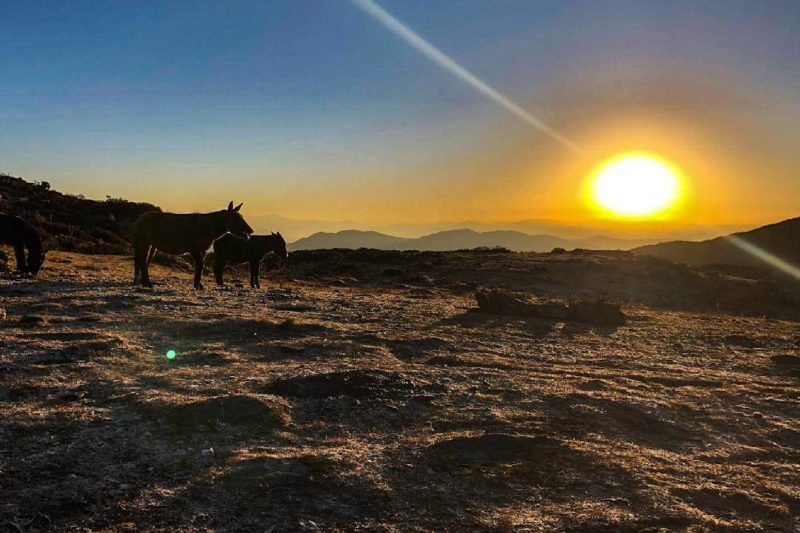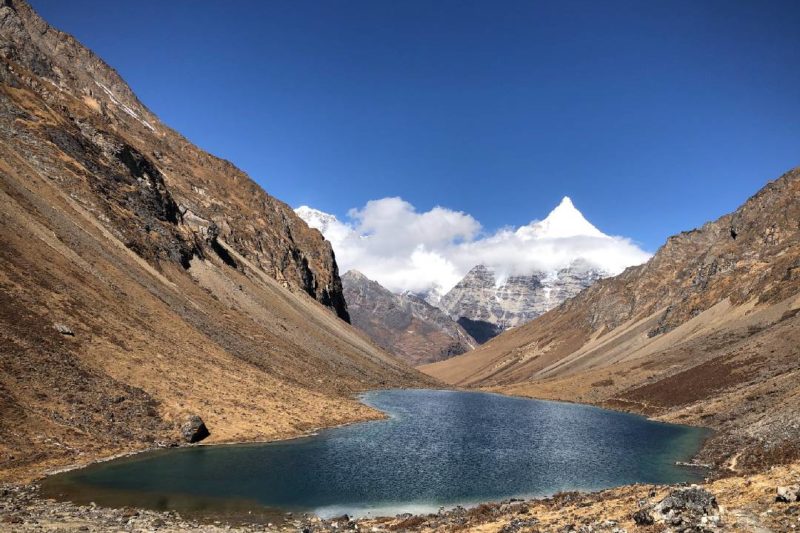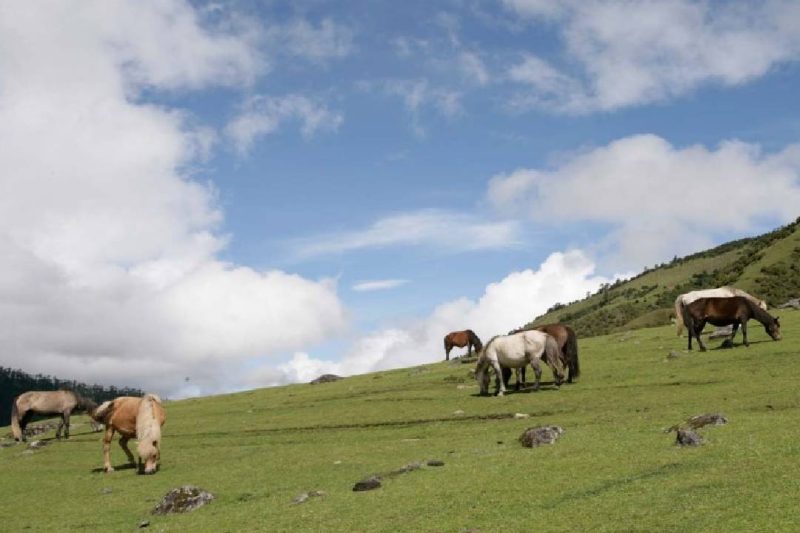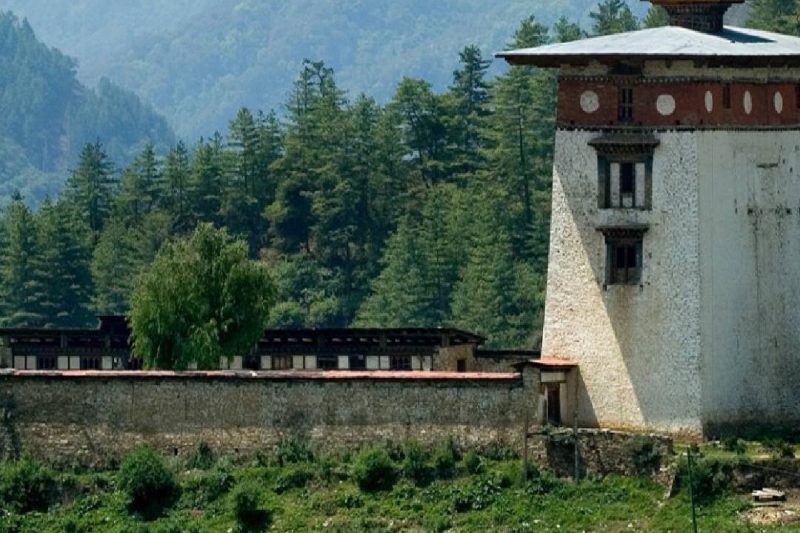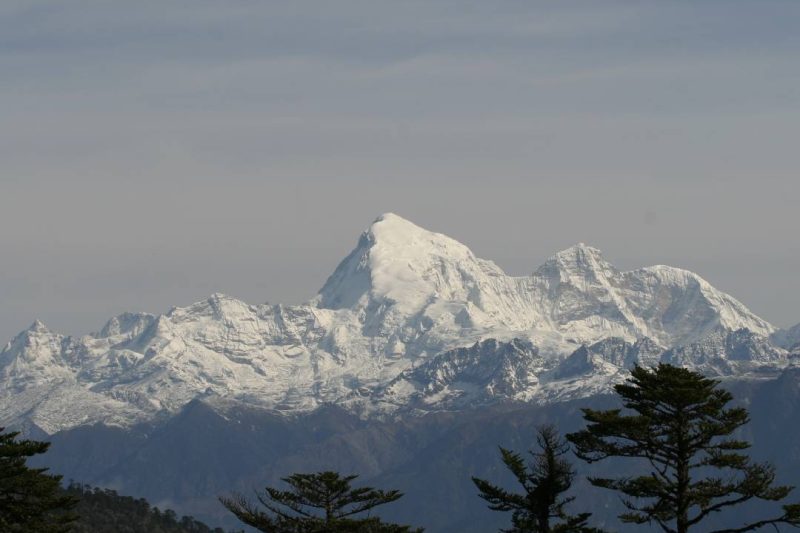An exploration easy trek which begins from the north of the beautiful Haa valley with trails through scenic mountain views and the valleys of Haa and Paro. During the trek, experience spectacular views of the Himalayan ranges, with grand views of some of the world’s tallest mountains – Mount Jumolhari (7,314m), Mount Jichu Drake (6,989m), Mount Tsherimgang (6,789m), and Mount Kanchenjongga (8,586m) in Sikkim. Experience the pristine Bhutanese landscape through lush forests, endless meadows, and grazing pasture lands. The trek will follow some of the oldest trails used even today by local trives and yak herders.
Altitude in Paro: 2,280m
Onboard the aircraft, the flight is treated to spectacular views of snow peaked mountains and the Himalayan ranges. Paro airport (2,280m) is Bhutan’s only international airport where our dedicated team will receive you at the airport.
Paro Rinpung Dzong (Fortress of The Heap of Jewels)- Rinpung Dzong is an ancient fortress in traditional Bhutanese architecture with a complex of courtyards, temples, administration offices and open space surrounded by towering walls. All the buildings are equipped with huge windows with elaborate wooden carvings of traditional Bhutanese motifs. Paro Dzong is considered one of the finest examples of Bhutanese architecture and it’s one of the top tourist attractions in Bhutan. This impressive dzong is also seen during landing into Paro Airport.
National Museum of Bhutan – Ta Dzong. Originally built as a watchtower in 1649, atop a hill above the Rinpung Dzong, overlooking the whole picturesque Paro valley. Converted into a museum in 1968, its extensive collection includes astonishing antique thangka paintings, weapons and armor, and rich diversity of natural and historic artifacts.
Zuri Dzong- Considered one of the oldest dzong, this ancient fortress dates back to 1352 and home to the valley’s local protector. Built as a fort, the five-storey building is well protected by the surrounding double walls. The Zuri Dong is not an administrative center. The fortress houses a fine collection of murals and paintings in the upper chapels dedicated to the protector Zaa (Rahulla). Rich in history and royal in values, the cave in the area is believed to be the site where Buddha meditated in the 8th century.
Altitude in Paro: 2,280m
Taktsang Monastery, or the Tiger’s Nest (highest altitude: 3,120m)- A 4.5 km hike that will typically take 5-6 hours ascending around 600m to reach the destination. An experience through dense enchanted forests and spectacular mountain scenery along the trail.
Drukgyel Dzong- Unlike other Dzongs built by Zhabdrung Ngawang Namgyal and his successors, Drukgyel Dzong was served solely for defensive purpose without administrative and religious functions, especially against external threats from the border. The Dzong had housed the best armoury in the country at the time. As the name of the Dzong indicates (Druk is the local name for Bhutan, while Gyel means victory), it is said that it was built to commemorate Bhutanese victory over the combined forces of Tibetan and Mongolian army, which attempted several invasions to the country. In fine weather the towering peak of the sacred Mount Jomolhari (7314m) appears as a stunning backdrop.
A stroll through Paro town.
Altitude in Haa: 2,740m
Distance: 70km
Estimated travel time: 2,5hrs
Say goodbye to the lovely Paro valley, we will hit the road and drive to Haa valley, one of the most remote and sacred valleys in Bhutan.
Haa town- located next to Haa Chhu River and can be divided into two sectors – the northern part with the central bazaar and the southern occupied by a Bhutanese army camp and an IMTRAT (Indian Military Training Team).
Lhakhang Nagpo (Black Chapel) and Lhakhang Kharpo (White Chapel)- Two of the oldest temples in the valley. The temples origin is believed to have begun when the then Tibetan King Songtsen Gampo was seeking for an auspicious location for the new temples, he released one black pigeon and one white pigeon, and consequently built the temples where the pigeons landed. Both temples stand at the foothill of the Meri Puensum.
The inner shrine of Lhakhang Nagpo contains the statue of Jowo Sakyamuni adorned in a beautiful traditional crown and jewels. The shrine to the red-faced protector Drakdu Tsen can also be found here next to a trap door leading to the underground pool of a Tshomen (mermaid spirit).
Juneydrak Hermitage hike- Begins from the village of Katsho, about 1km north of Haa valley. The first part of the hike will take 40 minutes and will pass the Chorten Dangrim mani (prayer). The next destination will be the Chorten which marks the entrance to the hermitage. The caretaker of the Chorten will grant access to the Lhakhang.
Following the rough trail below the hermitage which leads to Katsho Goemba where a view of Katsho village is seen. If time permits, a chance to visit the Goemba to admire the fine antique thangkas inside should also be made
Distance: 6km
Estimated time: 3-4hrs
Camp altitude: 3,900m
Ascent: 900m
Start of Chelela trek and hike to camp site at Sagala (3,900m).
Distance: 12km
Estimated time: 6hrs
Camp altitude: 4,200m
Ascent: 540m
Descent: 250m
Sagala pass- If good weather permits, stunning views of Mount Jomolhari (7,314m) and Mount Jichu Drake (6,989m) will be observed. The trek continues through some ascents and descents and a walk through areas of rhododendrons and meadows, until the top of the ridge at 4,435m. Experince breathtaking views of the beattiful Haa valley at this point.
Continuing the trek through the forests of hemlock and Jupiter and reaching camp at 4,200m.
Distance: 12km
Estimated time: 7hrs
Ascent: 300m
Descent: 500m
Chelela Pass- One of the highest road passes in Bhutan located between Paro valley and Haa valley. On a clear day, breathtaking views of the Himalayan peaks including Mt. Jomolhair, Mt. Jichu Drake and Mt. Kangchenjunga can been seen. In this region blue poppies (Bhutan’s national flower) also bloom during the period of late May to July.
Hike along the ridge through meadows and yak herder’s camp, through the rhododendron forest towards Kung Karpo Sky Burial at 4,458m. A rewarding view of the picturesque Haa valley awaits while ascending through the stone cairns to Kung Karpo.
The trail continues accompanied by the spectacular panorama view of Paro valley on the left and Haa valley on the right. The sight of Kila Goemba Nunnery below is also just as stunning until reaching Chelela pass at 3,800m.
Vehicle transfer to Thimphu.
Altitude in Paro: 2,280m
Altitude in Thimphu: 2,320m
National Memorial Chorten – one of Bhutan’s most prominent buildings. The Chorten is the monument of world peace and prosperity. For Bhutanese, the site also serves as the memorial to their Third King, His Majesty Jigme Dorji Wangchuck (1928-72).
Buddha Point (Buddha Dordenma) - At a height of 51,5m, placed on top of a hill in Kuenselphodrang Nature Park, the sight of the enormous statue of Shakyamuni Buddha is stunning and unforgettable. This giant statue is one of the largest in the world and is said to emanate an aura of peace and happiness.
Tashicho Dzong (Fortress of The Glorious Religion)- Tashichho Dzong has been the seat of the Bhutan government since 1952. Through the years, the dzong has gone through expansions and renovation and presently houses the throne room and offices of the king, the secretariat and the ministries of home affairs and finance. Other government departments are housed in buildings nearby.
Exploring the nooks and crannies of Thimphu city.

